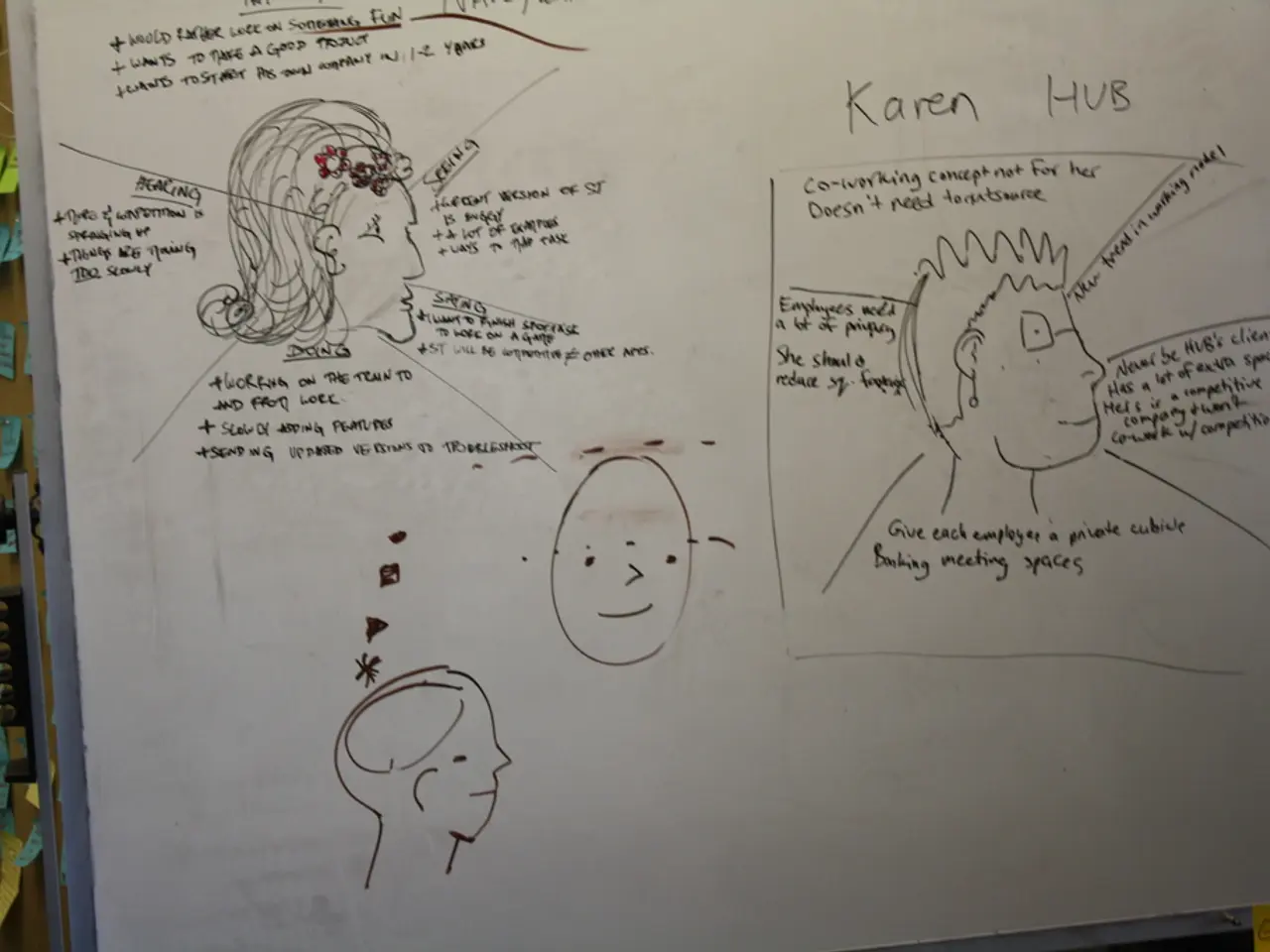Brainstorming Strategies: Substandard Concepts
The "Bad Ideas" method, a unique and playful ideation technique, is designed to break free from conventional thought patterns and stimulate divergent and lateral thinking. This approach invites participants to generate the most unconventional, impractical, or silly ideas related to a problem, creating an environment that fosters creativity, reduces fear of judgment, and encourages out-of-the-box thinking.
The method works by reducing psychological pressure, encouraging risk-taking and creativity, generating fresh perspectives, and creating a fun and engaging atmosphere. By embracing "bad" ideas, participants are able to break out of linear, logical thinking and explore unusual angles, leading to unexpected connections and insights for innovative solutions.
One of the key mechanisms by which the "Bad Ideas" method promotes divergent and lateral thinking is by reducing psychological pressure. Since the focus is on generating intentionally poor ideas, participants feel less inhibited or anxious about their contributions, enabling freer and more spontaneous thinking.
Another mechanism is the encouragement of risk-taking and creativity. Because there are no "wrong" answers in this context, people are more willing to experiment and explore unconventional ideas that can jumpstart out-of-the-box thinking.
The method also generates fresh perspectives by discussing the attributes of bad ideas and then reversing or modifying those traits. This prompts participants to think laterally—moving sideways from the original problem to new possibilities that might otherwise be overlooked.
Moreover, the "Bad Ideas" method creates a fun and engaging atmosphere, which increases engagement and encourages associative thinking, supporting the generation of novel ideas far from typical or obvious ones.
In practice, after collecting the worst ideas, a facilitator leads the group to analyze why these ideas are "bad" and then challenges them to identify positive opposites or ways to improve these concepts, thus transforming poor ideas into innovative solutions.
The "Bad Ideas" method is effective because it breaks down mental blocks, expands the idea space, and fosters the creative leaps necessary for the origination of unique ideas in ideation sessions. It is not just a method for coming up with bad ideas, but can also be an effective method for coming up with good ideas.
The "Bad Ideas" method can be visualized as two lines opening up from a single point, resembling a "less than" sign (<), symbolizing the divergent thinking it encourages. A free template for "How to Ideate with Bad Ideas-A Divergent Ideation Method" is available for download, making it accessible for anyone looking to enhance their ideation process and develop their divergent thinking skills.
Currently, approximately 317,955 designers enjoy the newsletter associated with the Bad Ideas method, demonstrating its popularity and effectiveness in the design community.
In conclusion, the "Bad Ideas" method is a powerful tool for stimulating creativity, breaking free from conventional thought patterns, and fostering the generation of unique and innovative ideas.
- UX design sessions can benefit from the "Bad Ideas" method, as it encourages out-of-the-box thinking and fosters creativity in a low-pressure environment.
- By embracing intentionally bad ideas, one can break free from linear, logical thinking and explore unusual angles for innovative solutions in the lifestyle sector, such as fashion-and-beauty or home-and-garden fields.
- Travel itineraries for exotic destinations could be enhanced with the "Bad Ideas" method, stimulating the generation of novel and unexpected experiences.
- In the realm of relationships, couples might use the method to spark conversations and find creative solutions to common issues, bringing a fresh perspective to their relationship dynamics.
- Pet owners could employ the "Bad Ideas" method when shopping for toys or gadgets, leading to innovative and unconventional pet accessories.
- Student groups can utilize this technique in academic settings to enhance their brainstorming sessions in areas such as career-development, education-and-self-development, personal-growth, food-and-drink, and shopping, generating unique solutions for their projects.




